Kirby Larson's Blog, page 13
June 24, 2014
From the Office of the Future of Reading
Please join me in welcoming today's guest blogger, Erica Shipow. Erica is a 5th grade writing teacher and librarian at Boston Collegiate Charter School in Boston, MA. When she was four, she threw a book down the stairs and was instantly reprimanded by her mother, who told her that “books are our friends.” She is happy to have made friends with so many books since then. You can find her on Twitter.
 Erica Shipow
Erica ShipowI did not expect to be inspired on the last Monday of the school year. Honestly, my thoughts this year were focused less on learning and more on keeping my classroom from self-imploding as we counted down to summer. Not quite knowing what to do, I turned to one of my old standbys – picture books. This time around, I chose Shaun Tan’s Rules of Summer.
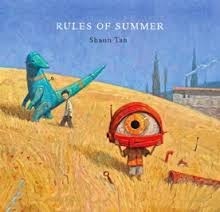
Rules of Summer came out just over a month ago, and it is already generating lots of buzz (including snagging a Boston Globe-Horn Book Picture Book Honor last month!). It is a story of two brothers and their summer “rules,” and in true Shaun Tan fashion it shows so much more than it tells. The text in the book is comprised of a series of simple statements: Never leave the back door open overnight, never forget the password, etc. Where the depth of the story develops is in the illustrations, which use abstract images to convey the true spirit behind each “rule” and to develop the relationship between the older and younger brother.
When I first saw the book, I figured I would just read it quickly to my 5th grade writing students and then have them create their own “rules” as a fun end-of-year activity. I knew that there was a lot happening in the illustrations, and I told my students that they would have to “look deeper” to figure out what was really going on, but I wasn’t sure that they would really understand or care about the story or the abstract images. I was so, so wrong.
My students went NUTS for this book. By page two, they were already leaping up, hands in the air, shouting “I know! I know! I get it!” By page three, they had started to create a storyline. By page four, they were asking me to turn back to previous pages because they had noticed recurring images. And on each page, they pointed out things that I never would have noticed on my own. It’s been a while since I’ve seen my students so excited, so curious, so fearless – they freely admitted when they didn’t understand certain pictures, and they took risks in interpreting what they saw and challenging each other’s interpretations. It was inspiring, it was authentic, and it was AWESOME.
Generating this sort of enthusiasm is not always easy. There is a lot we have to do day-to-day in our classrooms, and sometimes we worry so much about making the most out of the time we have that we overplan and overscript and overassess. If we really want to see our kids as readers, though, and in turn have them see themselves as readers, we have to hand the reins over to them. We have to let them experience the sheer power of finding something new and cool and weird and making some sense out of it. Whether it’s with picture books or novels or nonfiction texts or graphic novels or whatever, we have to give students ownership in figuring things out. That’s what the true joy of books is all about – not necessarily finding the meaning, not completely understanding the meaning so that you can spit it out in an essay or on an exam, but actively creating that meaning – and the more we can connect our kids with books that let them do that, the more joyful they will be.
I felt as if I was in your classroom, Erica, soaking up your students' enthusiasm. Thanks for this great remember to let kids take the lead in their own learning!
Published on June 24, 2014 05:30
June 20, 2014
Friend Friday
It is a pleasure to host the multi-talented Jim Averbeck today. I first met Jim on the "red carpet" at the Newbery-Caldecott banquet -- I was in Adrianna Papell and he was wearing Armani. I cannot wait to read his latest book, his first middle-grade mystery.
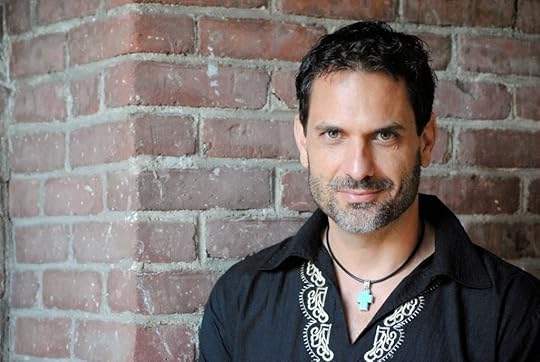 Jim Averbeck
Jim Averbeck
Stories that Laugh in the Dark:Why I Wrote “A Hitch at the Fairmont”
Some kids laugh at slapstick. Others like knock-knocks. But some prefer their humor a bit darker. I was such a child. I had been that always-ill kid whose mom, loving but perhaps a little overprotective, had kept me safe by mentioning the million ways I might die. So is it any wonder that when I first met Alfred Hitchcock in my family room (on the TV) I welcomed him like a slightly macabre uncle. Here was a guy who could get me shivery scared and then crack a joke to make me laugh at the fear -- just the right antidote for too many ways to die.
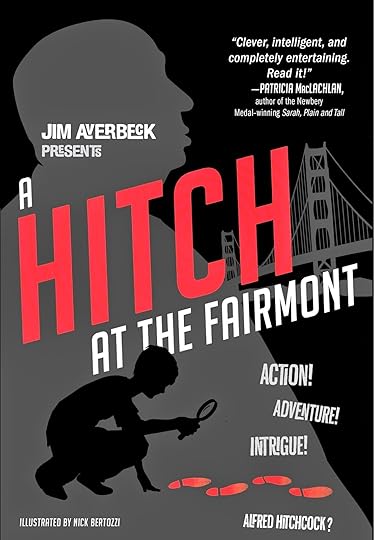
“It’s a marvelous city for a murder.” That’s how I paraphrase Alfred Hitchcock’s documented assessment of San Francisco in my new book A HITCH AT THE FAIRMONT. Few cities have stockpiled so much treasure and tragedy in so short a life as this one. It is a city whose past is present around every corner. Look! There’s the fountain where 1906 earthquake survivors left notes for family and friends; there’s the hotel where the United Nations was created; there’s the bookstore where the Beats hung out. When I moved to "The City” as an adult, like so many newcomers, I was intrigued. I wandered its streets, seeking out the stories to be found on its bright hillsides and shadowed valleys. I’d feel a chill in the park above the Cliff House, the foggy wind gusting past me, or photo-bomb tourists on the cable cars from a street downtown, or get buzzed tasting samples of bitter green tea in Chinatown. Sometimes I’d come across a spot that looked familiar, though I had never been there before. These places would haunt me. I had no explanation for how I knew them. Was it a past incarnation? One thing was sure, this newcomer wanted to stay. My own assessment was more cheerful than Hitchcock’s. It’s a marvelous city for a life.
One night, I went to see a cabaret singer at the city's famous Plush Room, in the Empire Hotel. Approaching the hotel I was again gripped by the feeling that I had been there before. But this time the building was willing to divulge its secret. A little plaque on the wall informed me that this hotel had been the home to a character in the Alfred Hitchcock classic Vertigo. I realized I had likely crossed the street right where Alfred Hitchcock had stood to film the scene. So many of those haunting places I'd first seen in his films. I was struck by how we are all constantly crossing paths with history, following footsteps from decades ago.
My love of San Francisco history and my fascination with Alfred Hitchcock collided, like tectonic plates. And I knew a story was to be found where they rubbed together. What if I could snip out those intervening years, let my child-self meet up with the great director in my new hometown. I could tell the story of a boy with fears learning to vanquish them with cinematic advice from the master of suspense. And that boy could teach the director a thing or two that just might show up in later films. It’s a story I would have wanted to hear, or even experience, as a child. A story that could remind kids today that sometimes the best way to conquer a fear is to do so with a laugh.
Jim Averbeck works, plays, and evades the law in San Francisco, California. Between dodging the falling bodies of vertiginous blondes, crouching to avoid killer birds, and taking quick, fearful showers behind a triple-locked bathroom door, he writes and illustrates for children. His first book, In a Blue Room, was a Charlotte Zolotow Honor book. His popular books, except if and OH NO, Little Dragon! feature charming protagonists with pointy teeth. His book, The Market Bowl, was a Junior Library Guild Selection. A Hitch at the Fairmont is his first novel for middle-grade readers. Spy agencies can find Jim online at jimaverbeck.com.
 Jim Averbeck
Jim Averbeck
Stories that Laugh in the Dark:Why I Wrote “A Hitch at the Fairmont”
Some kids laugh at slapstick. Others like knock-knocks. But some prefer their humor a bit darker. I was such a child. I had been that always-ill kid whose mom, loving but perhaps a little overprotective, had kept me safe by mentioning the million ways I might die. So is it any wonder that when I first met Alfred Hitchcock in my family room (on the TV) I welcomed him like a slightly macabre uncle. Here was a guy who could get me shivery scared and then crack a joke to make me laugh at the fear -- just the right antidote for too many ways to die.

“It’s a marvelous city for a murder.” That’s how I paraphrase Alfred Hitchcock’s documented assessment of San Francisco in my new book A HITCH AT THE FAIRMONT. Few cities have stockpiled so much treasure and tragedy in so short a life as this one. It is a city whose past is present around every corner. Look! There’s the fountain where 1906 earthquake survivors left notes for family and friends; there’s the hotel where the United Nations was created; there’s the bookstore where the Beats hung out. When I moved to "The City” as an adult, like so many newcomers, I was intrigued. I wandered its streets, seeking out the stories to be found on its bright hillsides and shadowed valleys. I’d feel a chill in the park above the Cliff House, the foggy wind gusting past me, or photo-bomb tourists on the cable cars from a street downtown, or get buzzed tasting samples of bitter green tea in Chinatown. Sometimes I’d come across a spot that looked familiar, though I had never been there before. These places would haunt me. I had no explanation for how I knew them. Was it a past incarnation? One thing was sure, this newcomer wanted to stay. My own assessment was more cheerful than Hitchcock’s. It’s a marvelous city for a life.
One night, I went to see a cabaret singer at the city's famous Plush Room, in the Empire Hotel. Approaching the hotel I was again gripped by the feeling that I had been there before. But this time the building was willing to divulge its secret. A little plaque on the wall informed me that this hotel had been the home to a character in the Alfred Hitchcock classic Vertigo. I realized I had likely crossed the street right where Alfred Hitchcock had stood to film the scene. So many of those haunting places I'd first seen in his films. I was struck by how we are all constantly crossing paths with history, following footsteps from decades ago.
My love of San Francisco history and my fascination with Alfred Hitchcock collided, like tectonic plates. And I knew a story was to be found where they rubbed together. What if I could snip out those intervening years, let my child-self meet up with the great director in my new hometown. I could tell the story of a boy with fears learning to vanquish them with cinematic advice from the master of suspense. And that boy could teach the director a thing or two that just might show up in later films. It’s a story I would have wanted to hear, or even experience, as a child. A story that could remind kids today that sometimes the best way to conquer a fear is to do so with a laugh.
Jim Averbeck works, plays, and evades the law in San Francisco, California. Between dodging the falling bodies of vertiginous blondes, crouching to avoid killer birds, and taking quick, fearful showers behind a triple-locked bathroom door, he writes and illustrates for children. His first book, In a Blue Room, was a Charlotte Zolotow Honor book. His popular books, except if and OH NO, Little Dragon! feature charming protagonists with pointy teeth. His book, The Market Bowl, was a Junior Library Guild Selection. A Hitch at the Fairmont is his first novel for middle-grade readers. Spy agencies can find Jim online at jimaverbeck.com.
Published on June 20, 2014 05:30
June 19, 2014
From the Office of the Future of Reading
Please join me in welcoming today's guest blogger, Heather Maxwell. Heather is a native of Arizona and just finished her 17th year as a teacher. She currently teaches 5th grade at Litchfield Elementary school in Litchfield Park, AZ. Over the years, she has taught grades 1, 3, 4, and 5, serving as a librarian and reading specialist as well. Heather also spent 4 years as a "teacher on assignment", which had her working with the principal and overseeing most of the discipline at her school. Heather thought that she wanted to move into administration, but after moving back into the classroom the past two years, she knows that this is where her heart belongs. Heather has been married to her high school sweetheart Silas for 16 years and they have a 12 year old daughter, Jo, who keeps them laughing and feeling young.
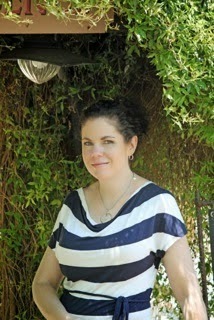 Heather Maxwell
Heather Maxwell
Our Journey with Book Talks
This year, in my classroom, I set out with great intentions for doing regular book talks with my students. I had planned ones that I would do, of books that I had loved, but thought that my students would not really pick on their own, and I had also planned on having my students do book talks, too, sharing their favorites with their classmates.
And things really did start off well. I modeled the book talks for my students quite a few times, and introduced them to books that I thought they might enjoy, but that maybe they had never heard of. And it worked! After each book talk that I did, I would have students clamoring for the books that I introduced them to. Each week, I picked a few new titles, both from my classroom library and from our school library, and “talked” them up in my classroom. I was so excited every time I saw one of my students reading a book that I had recommended. It was exactly what I had hoped would happen!
I also spent time teaching my students what a good book talk should include….and what it shouldn’t. We talked about how to “hook” your listener and get them excited about the book, and about why it would be a bad idea to give away too much of the story. We decided to end our book talks with recommendations of who might like this book. For example, “If you loved Hatchet, then you should give this book a try.” I urged my students to practice their book talks ahead of time, and to jot down notes on note cards, if that would be helpful to them.
The first few students did okay, and a few truly followed the guidelines that I had modeled and taught to them, but mostly their book talks were either dry and boring, or they contained spoilers. I also had students arguing over who would get to book talk popular titles that many of them were reading. And, I’m embarrassed to say, that due to these issues, and also to a lack of time during the day, I slowly let student-led book talks die out. While I continued to introduce titles to them, I stopped having the students do book talks of their own.
At the end of the year, I reflected on how things went and concluded that I did not do enough to set my students up for success. I also realized that I gave up too easily, and just let it go, telling myself that we didn’t have time for it anyway. What I should have done was talk with my students about ways to make our book talks better and get their ideas on how to make time for them. In my heart, I know that getting kids to love reading is the end goal for me, and including book talks, both my own and the ones the students do, is an authentic way to instill that love of reading. I realize now that some things are just too important to let go.
Thank you Heather for sharing about both your successes and your opportunities! I am confident that your honesty and frankness is going to speak to others struggling with similar challenges.
 Heather Maxwell
Heather MaxwellOur Journey with Book Talks
This year, in my classroom, I set out with great intentions for doing regular book talks with my students. I had planned ones that I would do, of books that I had loved, but thought that my students would not really pick on their own, and I had also planned on having my students do book talks, too, sharing their favorites with their classmates.
And things really did start off well. I modeled the book talks for my students quite a few times, and introduced them to books that I thought they might enjoy, but that maybe they had never heard of. And it worked! After each book talk that I did, I would have students clamoring for the books that I introduced them to. Each week, I picked a few new titles, both from my classroom library and from our school library, and “talked” them up in my classroom. I was so excited every time I saw one of my students reading a book that I had recommended. It was exactly what I had hoped would happen!
I also spent time teaching my students what a good book talk should include….and what it shouldn’t. We talked about how to “hook” your listener and get them excited about the book, and about why it would be a bad idea to give away too much of the story. We decided to end our book talks with recommendations of who might like this book. For example, “If you loved Hatchet, then you should give this book a try.” I urged my students to practice their book talks ahead of time, and to jot down notes on note cards, if that would be helpful to them.
The first few students did okay, and a few truly followed the guidelines that I had modeled and taught to them, but mostly their book talks were either dry and boring, or they contained spoilers. I also had students arguing over who would get to book talk popular titles that many of them were reading. And, I’m embarrassed to say, that due to these issues, and also to a lack of time during the day, I slowly let student-led book talks die out. While I continued to introduce titles to them, I stopped having the students do book talks of their own.
At the end of the year, I reflected on how things went and concluded that I did not do enough to set my students up for success. I also realized that I gave up too easily, and just let it go, telling myself that we didn’t have time for it anyway. What I should have done was talk with my students about ways to make our book talks better and get their ideas on how to make time for them. In my heart, I know that getting kids to love reading is the end goal for me, and including book talks, both my own and the ones the students do, is an authentic way to instill that love of reading. I realize now that some things are just too important to let go.
Thank you Heather for sharing about both your successes and your opportunities! I am confident that your honesty and frankness is going to speak to others struggling with similar challenges.
Published on June 19, 2014 05:30
June 18, 2014
Wednesday Wisdom
"What you will do matters. All you need is to do it."
Judy Grahn
Judy Grahn
Published on June 18, 2014 05:30
June 17, 2014
From the Office of the Future of Reading
Please help me welcome today's guest blogger Susan Dee. Susan is currently a 4th/5th Grade Literacy teacher at Biddeford Intermediate School in Biddeford, Maine and adjunct instructor for the Department of Literacy, Language, and Culture at the University of Southern Maine. Susan has 25 years of teaching experience in pre-k through 5th grade. She is an avid reader and recommender who is devoted to fostering a joyful reading life in readers of ALL ages! Susan is co-host of #MELit, Maine’s monthly Literacy Twitter Chat and chairperson of #nErDcampNNE.
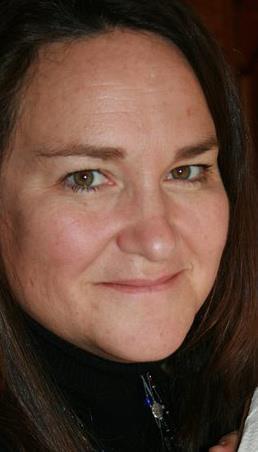 Susan Dee
Susan Dee
Building a Reading Community: One Book, One School, One Library
I just love the looks on students' faces when they meet the authors of books they have read face-to-face. There really is nothing else quite like it! When kids get to meet an author of a book they have read, a very special connection is made. Students are energized and inspired with a deeper appreciation of reading and writing. When a student can "touch" the hand behind the printed page of the book they've read, books become more deeply personal and important.
In 2009, our school’s Literacy Team began a bi-annual One Book, One School, One Library event, in partnership with our city’s public library, that has become a hallmark of our school community. This event is so powerful because not only does the entire school community read the same book, but then we bring the author of the chosen book to our school for three days of visits! Planning for this event begins the previous year, as the committee discusses and chooses the book/author we want to invite. Once the book/author are selected, a copy of the book is purchased for every single person in our school, including office staff, custodians, and our cafeteria staff. We also purchase a copy of the book for the Children’s Room staff at our local library, our Superintendent, Assistant Superintendent and School Board members.
Approximately two months before the author is scheduled to visit, we hold a Book Distribution Assembly where we announce the author’s visit and that each reader is getting their own copy of the book! The energy in the room is not unlike the excitement of being at the seventh game of the World Series, with the Boston Red Sox taking it all! The excitement is palpable! Teachers are provided with a Resources Packet of materials to support literacy instruction and everyone is encouraged to begin reading the book. It’s always music to my reading heart as conversations about the book we are reading spill out into the hallways, at lunch and recess, and as students are waiting for their buses! The hum of book love….nothing like it!

And then the author arrives! We start the morning off by welcoming the visiting author to our school! As they walk through the tunnel of cheering, clapping students and adults you can already sense the connections being made. The huge smiles on student faces and the overwhelming look of gratitude on the author’s face always reconfirm to me how powerful the three days will be for our students. After a whole school assembly, where the author talks about their writing life and books in more general terms, classrooms are treated to a 50 minute small group session with no more the 40 students in each session. During these sessions, the author speaks specifically about the book we’ve all read. The questions and conversations are so much deeper because everyone has the shared experience of a common text. I love watching and hearing the interactions between the students and the authors. They are always so heartfelt and genuine!
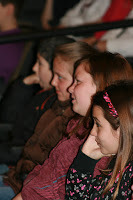
Putting together a One Book, One School, One Library event takes thoughtful planning by our school's Literacy Team and couldn't happen without the financial support of our Parent Teacher Association. When you bring an author to your school, you are not only helping your students, you are also supporting the art of writing! It's an investment of time and money that has long lasting effects for everyone involved!
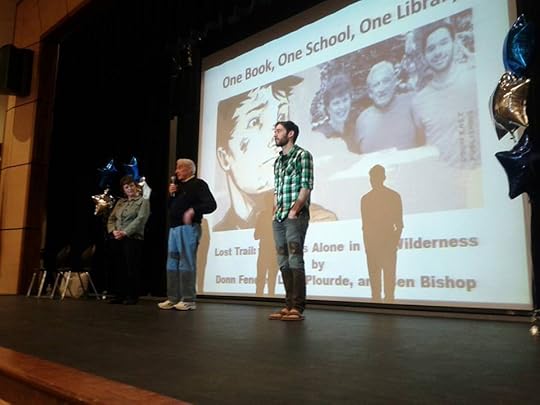 Whole School Assembly with Children’s Author Lynn Plourde, Illustrator Ben Bishop, and surprise guest Donn Fendler
Whole School Assembly with Children’s Author Lynn Plourde, Illustrator Ben Bishop, and surprise guest Donn Fendler
Thank you Susan for sharing about this wonderful experience! What you have done is absolutely amazing. I am in awe. I also love the thought of hearing "the hum of book love." Heaven on earth!
 Susan Dee
Susan Dee
Building a Reading Community: One Book, One School, One Library
I just love the looks on students' faces when they meet the authors of books they have read face-to-face. There really is nothing else quite like it! When kids get to meet an author of a book they have read, a very special connection is made. Students are energized and inspired with a deeper appreciation of reading and writing. When a student can "touch" the hand behind the printed page of the book they've read, books become more deeply personal and important.
In 2009, our school’s Literacy Team began a bi-annual One Book, One School, One Library event, in partnership with our city’s public library, that has become a hallmark of our school community. This event is so powerful because not only does the entire school community read the same book, but then we bring the author of the chosen book to our school for three days of visits! Planning for this event begins the previous year, as the committee discusses and chooses the book/author we want to invite. Once the book/author are selected, a copy of the book is purchased for every single person in our school, including office staff, custodians, and our cafeteria staff. We also purchase a copy of the book for the Children’s Room staff at our local library, our Superintendent, Assistant Superintendent and School Board members.
Approximately two months before the author is scheduled to visit, we hold a Book Distribution Assembly where we announce the author’s visit and that each reader is getting their own copy of the book! The energy in the room is not unlike the excitement of being at the seventh game of the World Series, with the Boston Red Sox taking it all! The excitement is palpable! Teachers are provided with a Resources Packet of materials to support literacy instruction and everyone is encouraged to begin reading the book. It’s always music to my reading heart as conversations about the book we are reading spill out into the hallways, at lunch and recess, and as students are waiting for their buses! The hum of book love….nothing like it!

And then the author arrives! We start the morning off by welcoming the visiting author to our school! As they walk through the tunnel of cheering, clapping students and adults you can already sense the connections being made. The huge smiles on student faces and the overwhelming look of gratitude on the author’s face always reconfirm to me how powerful the three days will be for our students. After a whole school assembly, where the author talks about their writing life and books in more general terms, classrooms are treated to a 50 minute small group session with no more the 40 students in each session. During these sessions, the author speaks specifically about the book we’ve all read. The questions and conversations are so much deeper because everyone has the shared experience of a common text. I love watching and hearing the interactions between the students and the authors. They are always so heartfelt and genuine!

Putting together a One Book, One School, One Library event takes thoughtful planning by our school's Literacy Team and couldn't happen without the financial support of our Parent Teacher Association. When you bring an author to your school, you are not only helping your students, you are also supporting the art of writing! It's an investment of time and money that has long lasting effects for everyone involved!
 Whole School Assembly with Children’s Author Lynn Plourde, Illustrator Ben Bishop, and surprise guest Donn Fendler
Whole School Assembly with Children’s Author Lynn Plourde, Illustrator Ben Bishop, and surprise guest Donn Fendler
Thank you Susan for sharing about this wonderful experience! What you have done is absolutely amazing. I am in awe. I also love the thought of hearing "the hum of book love." Heaven on earth!
Published on June 17, 2014 08:14
June 13, 2014
Friend Friday
What a pleasure to welcome Anne Belov to my blog today. She has quite the story to tell about her new picture book, her first (she has four collections of her comic, The Panda Chronicles). So without further ado, I'll let her tell you all about it!
 Anne Belov and friend
Anne Belov and friend
It’s finally happened: Pandamorphosis , my wordless picture book, is in print. It didn’t happen the way I thought it would, and there have been more twists and turns than a panda can count on her paws.
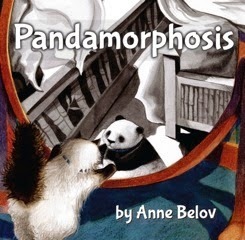
Pandamorphosis is the story of a cat which longs for love from her panda-obsessed owner, and on a moonlit night, when magic is in the air, she makes a wish, and a transformation takes place.

I did the responsible, writerly thing while working on Pandamorphosis : I shared it with critique groups, teachers, and librarians; signed up for consultations with visiting editors, illustrators, and agents, all the while gathering input, some of which was useful, some of which was not. Because it evolved into a wordless picture book/ graphic novel format, I felt that I would gain from the experience of doing the entire thing in as final a state as I could, knowing that I might have to do some of the drawings over.
I submitted it to agents and editors. The prevailing response was “we love your artwork, but…” Then I took it to a regional SCBWI conference, and was fortunate to get a critique with (insert name of art director at big publishing house here) and he not only loved it, he asked to take it with him. He sent it on to the acquisitions editor where it disappeared in that black hole of submission hell, never to be seen again.
This story could end right here, with my pandam-opus residing forever in a drawer. But after a year of keeping the pandas under house arrest, I realized I needed to try one more time, so that I could move on to other projects.
I showed it to an editor at the Whidbey Island Writers Conference, and she loved it, and eventually accepted it for publication. Now you may think you are going to get a happy ending, and you are, just not the one you thought you were getting.
Events transpired, and suddenly, my editor left the publisher. Without my editor to champion and protect my book, I felt staying with them would do Pandamorphosis more harm than good. After weighing all the options (staying, going, starting up the rounds of submissions again, publishing independently,) I decided that independent publishing was my best option to complete this project and be able to move on.
Previous to signing with the publisher, I ran a Kickstarter campaign for production funding which was wildly successful. The support of my panda fan-base gave me the funding to pay a book designer and get marketing help, as well as print books for Kickstarter rewards.
What also came in abundance were the offers of support and assistance from my loyal PandaChronicles readers, many of whom supported my Kickstarter campaign. With their enthusiasm and encouragement, Pandamorphosis is off to a great start.
Talk about magical wishes…
Anne Belov has been drawing and painting since the time she could hold a crayon. After receiving a BFA from The Philadelphia College of Art, she moved west and, since she didn’t learn everything the first time, went to art school again, receiving an MFA in painting from the University of Washington. She now makes her home on Whidbey Island. There are, to her knowledge, no pandas in her backyard. You can find her panda satire cartoons at The Panda Chronicles.
 Anne Belov and friend
Anne Belov and friendIt’s finally happened: Pandamorphosis , my wordless picture book, is in print. It didn’t happen the way I thought it would, and there have been more twists and turns than a panda can count on her paws.

Pandamorphosis is the story of a cat which longs for love from her panda-obsessed owner, and on a moonlit night, when magic is in the air, she makes a wish, and a transformation takes place.

I did the responsible, writerly thing while working on Pandamorphosis : I shared it with critique groups, teachers, and librarians; signed up for consultations with visiting editors, illustrators, and agents, all the while gathering input, some of which was useful, some of which was not. Because it evolved into a wordless picture book/ graphic novel format, I felt that I would gain from the experience of doing the entire thing in as final a state as I could, knowing that I might have to do some of the drawings over.
I submitted it to agents and editors. The prevailing response was “we love your artwork, but…” Then I took it to a regional SCBWI conference, and was fortunate to get a critique with (insert name of art director at big publishing house here) and he not only loved it, he asked to take it with him. He sent it on to the acquisitions editor where it disappeared in that black hole of submission hell, never to be seen again.
This story could end right here, with my pandam-opus residing forever in a drawer. But after a year of keeping the pandas under house arrest, I realized I needed to try one more time, so that I could move on to other projects.
I showed it to an editor at the Whidbey Island Writers Conference, and she loved it, and eventually accepted it for publication. Now you may think you are going to get a happy ending, and you are, just not the one you thought you were getting.
Events transpired, and suddenly, my editor left the publisher. Without my editor to champion and protect my book, I felt staying with them would do Pandamorphosis more harm than good. After weighing all the options (staying, going, starting up the rounds of submissions again, publishing independently,) I decided that independent publishing was my best option to complete this project and be able to move on.
Previous to signing with the publisher, I ran a Kickstarter campaign for production funding which was wildly successful. The support of my panda fan-base gave me the funding to pay a book designer and get marketing help, as well as print books for Kickstarter rewards.
What also came in abundance were the offers of support and assistance from my loyal PandaChronicles readers, many of whom supported my Kickstarter campaign. With their enthusiasm and encouragement, Pandamorphosis is off to a great start.
Talk about magical wishes…
Anne Belov has been drawing and painting since the time she could hold a crayon. After receiving a BFA from The Philadelphia College of Art, she moved west and, since she didn’t learn everything the first time, went to art school again, receiving an MFA in painting from the University of Washington. She now makes her home on Whidbey Island. There are, to her knowledge, no pandas in her backyard. You can find her panda satire cartoons at The Panda Chronicles.
Published on June 13, 2014 05:30
June 12, 2014
From the Office of the Future of Reading
Please join me in welcoming today's guest blogger, Patrick Andrus, a fourth grade teacher in Eden Prairie, MN. He has just finished his 23rd year of teaching. He was lucky enough to stumble upon Twitter several years ago and found that it opened his world and communication with other teachers and/or authors. Patrick then began his blog, which is called ReadWonder, inspired by the book Wonder by R.J. Palacio. One of the biggest highlights of his teaching career has been the creation and development of the “Breakfast with Books” book club. Follow him on Twitter.
 Patrick Andrus
Patrick Andrus
Breakfast with Books Book Club
Many years ago, I started a book club for the students in my classroom. Wishing I had started earlier, I began keeping track of the books that were chosen about five years ago. I keep a list of these selections on my blog.
Each month I announce our selection. It is a big day when a new book is announced. The students have the choice if they would like to read the book that month. If they choose to participate, they find a copy of the book, read it on their own, and attend our monthly book club meeting. It is called "Breakfast with Books" because we meet for 45 minutes before school. The book club enjoys some tasty breakfast treats (brought by book club members) and discusses the book. "Breakfast with Books" has got to be one of the most rewarding parts of my teaching career. I usually pick all the books for the book club the summer before the upcoming school year, but I have found that I change many titles when a new, exciting, must-read book comes out during the school year.
This past school year was especially exciting for our “Breakfast with Books” Book Club because we included the authors more than I ever have in the past. We Skyped with Suzanne Selfors for our first book club of the year. She even let us order books from her and autographed them for the readers. Our second Skype visit was with Jacqueline Resnick when we discussed A Valiant Quest Escape for the Misfit Menagerie. She autographed and sent bookmarks for all the students in my class. One of the highlights of the year was when Erin Soderberg was able to join our book club in person and answered our questions about The Quirks. I know the readers couldn’t believe that the author was actually in our classroom. She was wonderful. We continued to luck out and have the next two authors join us during our book club discussion when we read The Liberation of Gabriel King by K.L. Going and By the Grace of Todd by Louise Galveston. The readers brought the year to a close with the powerful novel A Dog’s Way Home by Bobbie Pyron.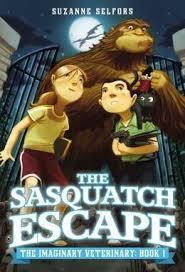
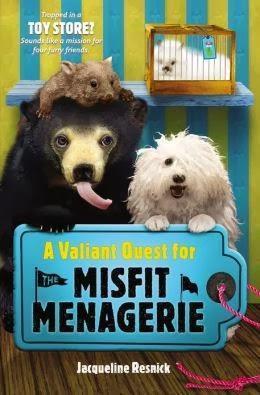
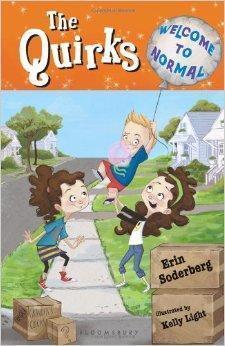
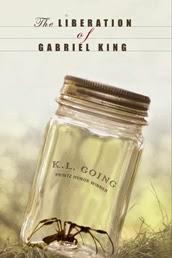
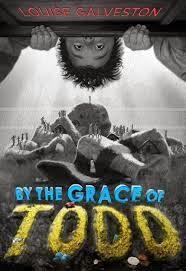

Bringing books alive with visits by the authors via the computer and/or in person has opened up my book club in more ways than I ever could have imagined. As the year comes to a close, I now need to get busy reading new books and finding those awesome authors that are willing to spend time with my fourth grade readers. Thank goodness summer is just around the corner…
Thank you, Patrick, for helping kids start their day with the best kind of Vitamin B: a book!
 Patrick Andrus
Patrick AndrusBreakfast with Books Book Club
Many years ago, I started a book club for the students in my classroom. Wishing I had started earlier, I began keeping track of the books that were chosen about five years ago. I keep a list of these selections on my blog.
Each month I announce our selection. It is a big day when a new book is announced. The students have the choice if they would like to read the book that month. If they choose to participate, they find a copy of the book, read it on their own, and attend our monthly book club meeting. It is called "Breakfast with Books" because we meet for 45 minutes before school. The book club enjoys some tasty breakfast treats (brought by book club members) and discusses the book. "Breakfast with Books" has got to be one of the most rewarding parts of my teaching career. I usually pick all the books for the book club the summer before the upcoming school year, but I have found that I change many titles when a new, exciting, must-read book comes out during the school year.
This past school year was especially exciting for our “Breakfast with Books” Book Club because we included the authors more than I ever have in the past. We Skyped with Suzanne Selfors for our first book club of the year. She even let us order books from her and autographed them for the readers. Our second Skype visit was with Jacqueline Resnick when we discussed A Valiant Quest Escape for the Misfit Menagerie. She autographed and sent bookmarks for all the students in my class. One of the highlights of the year was when Erin Soderberg was able to join our book club in person and answered our questions about The Quirks. I know the readers couldn’t believe that the author was actually in our classroom. She was wonderful. We continued to luck out and have the next two authors join us during our book club discussion when we read The Liberation of Gabriel King by K.L. Going and By the Grace of Todd by Louise Galveston. The readers brought the year to a close with the powerful novel A Dog’s Way Home by Bobbie Pyron.






Bringing books alive with visits by the authors via the computer and/or in person has opened up my book club in more ways than I ever could have imagined. As the year comes to a close, I now need to get busy reading new books and finding those awesome authors that are willing to spend time with my fourth grade readers. Thank goodness summer is just around the corner…
Thank you, Patrick, for helping kids start their day with the best kind of Vitamin B: a book!
Published on June 12, 2014 05:00
June 11, 2014
Wednesday Wisdom
"Whenever things go a bit sour in a job I'm doing, I always tell myself, 'You can do better than this.'"
Theodore Geisel
Theodore Geisel
Published on June 11, 2014 05:30
June 10, 2014
From the Office of the Future of Reading
Please join me in welcoming today's guest blogger, Natasha Carty. Natasha was a children's librarian in Connecticut and Maryland for over 10 years. She became a teacher 6 years ago and feels it has been the most wonderful, difficult, challenging, rewarding experience. This year she became a Nationally Board Certified Teacher candidate. It was a difficult process but made her a better teacher. She teaches at a Montessori charter school and loves the Montessori method of teaching. Students learn to become self-directed learners. This year she plans to keep striving to become a better teacher and finish more knitting projects than she starts.
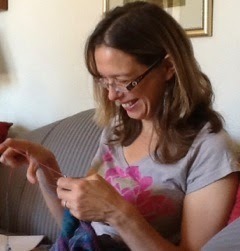 Natasha Carty
Natasha CartyI was a children's librarian for over ten years. I have always loved the library. When I was growing up,we always went to all the libraries in our vicinity and each member of my family checked out a stack of books. Consequently, we always owed library fines at each library. I was an anthropology major in college and when I graduated, I needed to find a job. I found my place in the library. When I got my first library job, I was excited, although I didn't know what to do with myself as I stood in a big room lined with shelves of children's books, a beautiful mural of Alice in Wonderland but no children. The source I turned to was a book belonging to my mother, an elementary teacher. It was Caroline Feller Bauer's This Way to Books. I still turn to this amazing resource which has wonderful ways to connect children with books and poetry.

A few years later, I got to attend one of her workshops and was excited to meet one of my mentors. One idea I love of hers is always having a "flood book" with you so you have something to read at all times. You never know when you'll be stuck waiting!
As a children's librarian, I wore many hats. I did baby story time. My co-workers told me I was quite a sight doing the hokey pokey while 8 months pregnant. I did pre-school storytimes, books and crafts for elementary students, young adult groups. My modus operandi was to announce that I was doing a program, then figure out how to do it. This may not work for some but it took me out of my comfort zone and I did some amazing programs: mystery parties for teens, shadow puppet programs, an anime club. When I was home with my daughter as a stay-at-home mom, I decided to go back to school to become a teacher, like my mother, father and sister. I guess it was in the blood. While I was student teaching, we had a reading program with a textbook. When I got a job at a Montessori charter school, we didn't have a reading program so I consulted many books to develop a method to support reading instruction. One book that was a great help me when selecting books to read to the class was Jim Trelease's The Read-Aloud Handbook. I have older editions and I used to look at his website to find new ideas. Luckily, his 7th edition was just released last year.
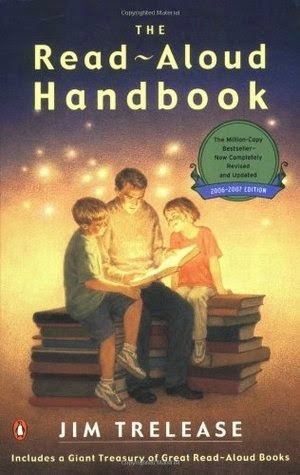
Books I have chosen using Jim Trelease's advice have always been well-loved by students such as A Nest for Celeste by Henry Cole. As a librarian, I was able to hear him speak.
Another book that was very helpful was Regie Routman's Reading Essentials. She also has a helpful book on writing called Writing Essentials. I hope to someday hear her speak or attend one of her workshops. When people ask how I help students learn to read I have several answers. I have a large and amazing classroom library with books at different reading levels and on all sorts subjects to capture student interest. I make the library inviting with small chairs and pillows.
One of the biggest things which seems so simple is I make sure students do a lot of reading throughout the day. Students book talk their favorite books. I also have lots of sets of books for literature circles. This year I did research on how to better support developing and struggling readers and I have improved my guided reading groups. I loved being a children's librarian, but also love teaching because it is such a challenge to figure out how to reach students and I am always working on becoming a better teacher.
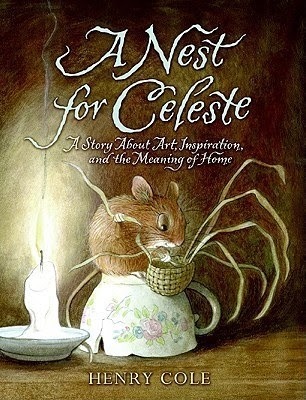
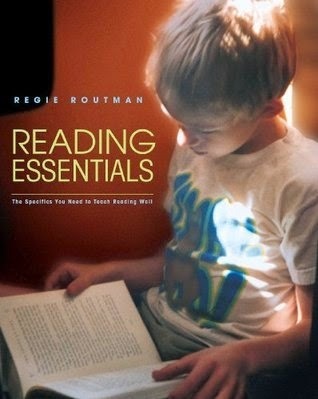
Thank you Natasha for sharing your journey with us. Keep up the good work! (And you and I are library fine sisters: my joke is that our new library was built because of all the fines I've had to pay!)
Published on June 10, 2014 05:30
June 6, 2014
Friend Friday
It's an honor to turn my blog over today to Vicky Alvear Shecter. I first met Vicky when I spoke at the SpringMingle conference for the Southern Breeze SCBWI. Like me, she is passionate about the past but with a difference: she is an expert on ancient history. And that expertise, along with powerful writing, comes through loud and clear in her newest novel, Curses and Smoke: A Novel of Pompeii. Welcome, Vicky!
 Vicky Alvear Schecter
Vicky Alvear Schecter
Not so Long Ago or so Far Away
By Vicky Alvear Shecter
Since my passion is ancient history, I’m constantly on the lookout for ways to connect current attitudes with their ancient echoes. For example, when researching my latest novel, Curses and Smoke: A Novel of Pompeii, I was fascinated to learn that Pompeii was not—as is so often portrayed—a crowded city at the time of the eruption. Months of tremors and rumblings had convinced most of the population to leave.

Still, about 1,200 bodies have been found in Pompeii. So why did these folks stay? “Think Katrina,” I prompt teen audiences. “Who didn’t leave New Orleans, even when it was clear that the hurricane would be catastrophic?”
“Stubborn folk,” someone usually says. Which is true, but I keep pressing. “Who else?”
“Poor people,” someone usually adds. Bingo. Bone analyses indicate that the majority of those left behind in Pompeii were women, children, and the elderly. Just like with Katrina, people may have wanted to leave but they likely didn’t have the means to—the money or horses/donkeys and carts—let alone anywhere else to go.
I also made the choice to make the male protagonist (the point of view alternates between girl and boy) a slave to show more than just the “rich patrician” point of view. The reason he’s a slave—and not the girl—I explain in this Huffington Post column (a conversation I typically skirt with teens!).
Occasionally, I come across a reviewer who is angry that I didn’t make my non-slave characters more adamantly anti-slavery. But here’s the thing—no one was anti-slavery in the ancient world! Slavery was so common, they couldn’t even conceive of a world without it. Even early Christians accepted it as “normal.” It wasn’t until the 15thand 16th centuries that people began to question the morality the practice.
I “could’ve” made my ancient characters be “all outraged” by slavery but I’d be wrong—and, worse, historically inaccurate. That in and of itself is a good launching point for discussing both ancient and modern slavery. Slavery may be outlawed globally, yet we still have more worldwide slaves (27 million) than existed in 1860. And here’s where looking at the past gives us even more insight into certain attitudes of today. The ancients believed that if you were a slave, it was somehow, at some level, “your own fault.”
Whether you were stolen into slavery or your people lost a war to Rome, it was all the same to them—there had to be something wrong with you or your people or the gods wouldn’t have fated slavery for you. And, if it’s your fault, how can they feel anything but disgust and disdain for you?
It’s a twisted bit of mental gymnastics we still see today, particularly when dealing with the poor. For many people, it is easier to blame the poor for their own problems rather look at the ways that our society traps some less fortunate in cycles of poverty. There are no easy answers but by comparing current attitudes against ancient ones, we can see how much we’ve changed—and how much we haven’t.
I don’t mean to make Curses and Smoke sound “heavy”—it’s essentially a love story that takes place under the shadow of Vesuvius. My secret hope, though, is that teen readers who come to the story for the fascination of a bygone era, come out the other side seeing themselves—and aspects of our own society—in new ways.
Vicky Alvear Shecter writes about the ancient world for midgrade and young adult readers. Her historical fiction novels for young adults include Cleopatra’s Moon and the recently released, Curses and Smoke: A Novel of Pompeii. For younger readers, she has a series on ancient mythology, called “Secrets of the Ancient Gods.” The first in the series, Anubis Speaks! was a 2014 Cybils Award finalist for midgrade nonfiction. Follow her on her blog!
 Vicky Alvear Schecter
Vicky Alvear SchecterNot so Long Ago or so Far Away
By Vicky Alvear Shecter
Since my passion is ancient history, I’m constantly on the lookout for ways to connect current attitudes with their ancient echoes. For example, when researching my latest novel, Curses and Smoke: A Novel of Pompeii, I was fascinated to learn that Pompeii was not—as is so often portrayed—a crowded city at the time of the eruption. Months of tremors and rumblings had convinced most of the population to leave.

Still, about 1,200 bodies have been found in Pompeii. So why did these folks stay? “Think Katrina,” I prompt teen audiences. “Who didn’t leave New Orleans, even when it was clear that the hurricane would be catastrophic?”
“Stubborn folk,” someone usually says. Which is true, but I keep pressing. “Who else?”
“Poor people,” someone usually adds. Bingo. Bone analyses indicate that the majority of those left behind in Pompeii were women, children, and the elderly. Just like with Katrina, people may have wanted to leave but they likely didn’t have the means to—the money or horses/donkeys and carts—let alone anywhere else to go.
I also made the choice to make the male protagonist (the point of view alternates between girl and boy) a slave to show more than just the “rich patrician” point of view. The reason he’s a slave—and not the girl—I explain in this Huffington Post column (a conversation I typically skirt with teens!).
Occasionally, I come across a reviewer who is angry that I didn’t make my non-slave characters more adamantly anti-slavery. But here’s the thing—no one was anti-slavery in the ancient world! Slavery was so common, they couldn’t even conceive of a world without it. Even early Christians accepted it as “normal.” It wasn’t until the 15thand 16th centuries that people began to question the morality the practice.
I “could’ve” made my ancient characters be “all outraged” by slavery but I’d be wrong—and, worse, historically inaccurate. That in and of itself is a good launching point for discussing both ancient and modern slavery. Slavery may be outlawed globally, yet we still have more worldwide slaves (27 million) than existed in 1860. And here’s where looking at the past gives us even more insight into certain attitudes of today. The ancients believed that if you were a slave, it was somehow, at some level, “your own fault.”
Whether you were stolen into slavery or your people lost a war to Rome, it was all the same to them—there had to be something wrong with you or your people or the gods wouldn’t have fated slavery for you. And, if it’s your fault, how can they feel anything but disgust and disdain for you?
It’s a twisted bit of mental gymnastics we still see today, particularly when dealing with the poor. For many people, it is easier to blame the poor for their own problems rather look at the ways that our society traps some less fortunate in cycles of poverty. There are no easy answers but by comparing current attitudes against ancient ones, we can see how much we’ve changed—and how much we haven’t.
I don’t mean to make Curses and Smoke sound “heavy”—it’s essentially a love story that takes place under the shadow of Vesuvius. My secret hope, though, is that teen readers who come to the story for the fascination of a bygone era, come out the other side seeing themselves—and aspects of our own society—in new ways.
Vicky Alvear Shecter writes about the ancient world for midgrade and young adult readers. Her historical fiction novels for young adults include Cleopatra’s Moon and the recently released, Curses and Smoke: A Novel of Pompeii. For younger readers, she has a series on ancient mythology, called “Secrets of the Ancient Gods.” The first in the series, Anubis Speaks! was a 2014 Cybils Award finalist for midgrade nonfiction. Follow her on her blog!
Published on June 06, 2014 05:30



